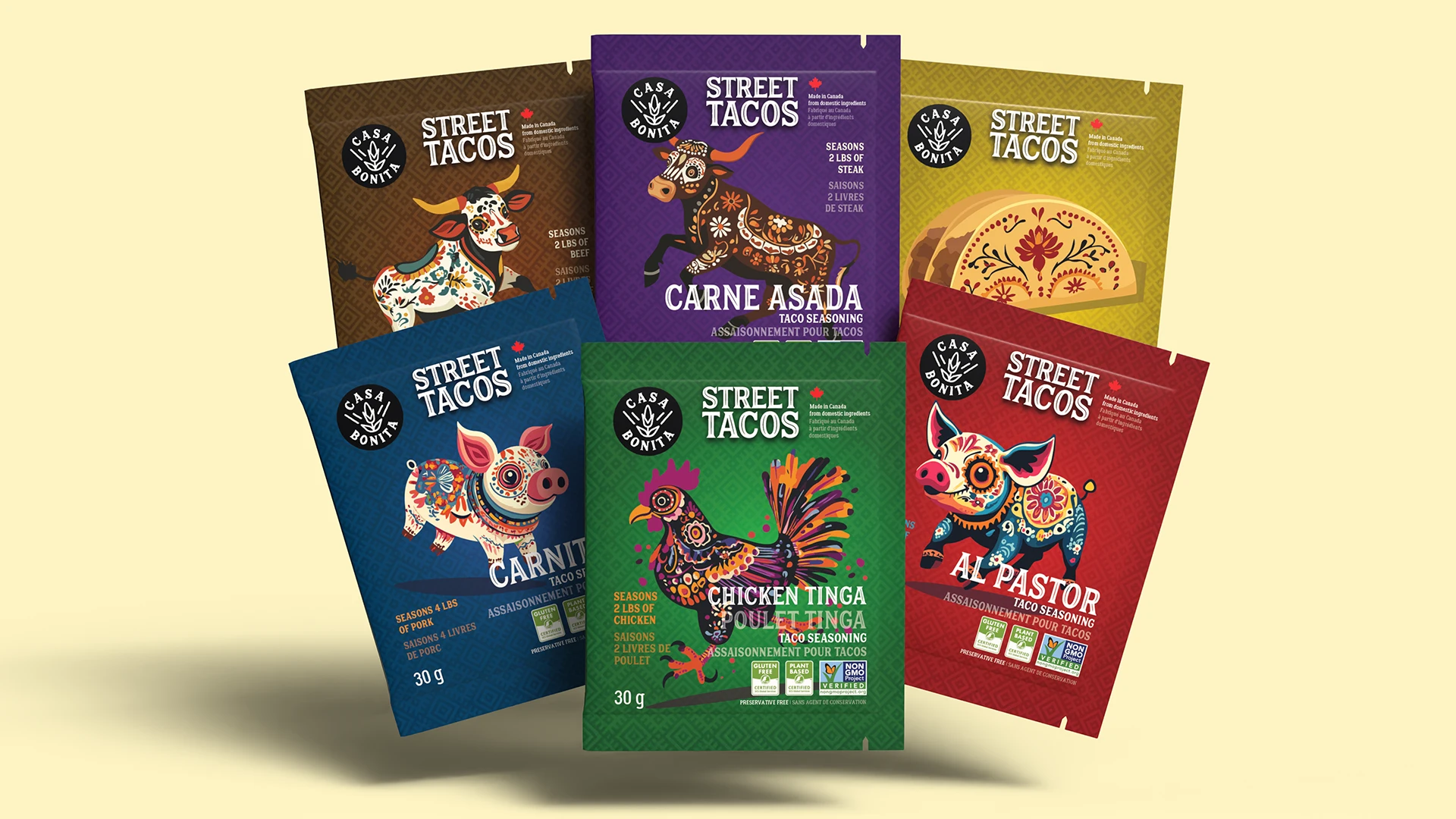Setting the right price for your food product can feel like perfecting a secret recipe—it takes a little trial and error, a pinch of market insight, and a whole lot of strategy. Whether you’re cooking up small-batch sauces or mass-producing gourmet chocolates, finding that sweet spot between affordability and profitability is key to standing out in a competitive market.
In this guide, we’ll serve up actionable tips to help you cook up the perfect pricing strategy that aligns with your brand’s goals and satisfies your customers’ cravings (and wallets!).
1. Know Your Costs—Down to the Last Crumb
Before you can determine how much dough you should be charging, you need to understand your costs inside and out. These include:
- Fixed Costs: Rent, utilities, equipment leases, and salaries for full-time employees—these remain constant regardless of how much product you’re producing. Think of them as your kitchen’s overhead expenses.
- Variable Costs: These change with your production levels and include ingredients, packaging, labeling, distribution, and direct labor costs. If you’re baking 1,000 cookies instead of 100, expect these costs to rise accordingly.
- Semi-Variable Costs: Some costs, like electricity or part-time staff wages, can fluctuate depending on production volume but have a base cost attached.
- Hidden Costs: Don’t overlook sneaky expenses like marketing, promotional discounts, waste, spoilage, and returns. These factors can chip away at your profits faster than you realize. Even investing in food certifications (organic, non-GMO) can rack up extra expenses but also add perceived value.
How to Calculate Your Break-Even Point: This is where your costs and revenue balance out. The formula is:

This will help you understand the minimum sales needed to cover costs before making any profit.
Actionable Tip: Create a detailed spreadsheet or use accounting software to track every single cost associated with making and selling your product. Update this data regularly—especially if ingredient costs fluctuate or supplier contracts change. This will help you avoid underpricing and ensure you’re always covering your bases (and your buns).
2. Understand Your Market—It’s Not Just a Popularity Contest
Who’s your target customer? Are they bargain hunters looking for a great deal, or gourmet foodies willing to pay a premium for quality? Understanding your market goes beyond knowing what people want—it’s about recognizing their willingness to pay, lifestyle preferences, and purchasing behaviors.
Here’s how to break it down:
- Demographics: Age, gender, income level, and geographic location all play a role in how much your customers are willing to pay for your products. For instance, health-conscious millennials might pay more for organic snacks, while busy families may prioritize affordability.
- Psychographics: Dive deeper into your audience’s interests, values, and lifestyle. Are they eco-conscious consumers who prefer sustainable packaging? Or adventurous eaters who crave unique flavor experiences?
- Competitor Benchmarking: Analyze similar products in the market and how they’re priced. This will help you determine if your brand should be positioned as a budget-friendly option, a mid-tier go-to, or a premium indulgence.
- Consumer Behavior: Are your customers price-sensitive, or do they associate higher prices with higher quality? Seasonal trends, buying frequency, and loyalty also influence pricing decisions.
Actionable Tip: Create buyer personas for your target audience segments. These profiles should outline their demographics, buying habits, preferences, and what drives their purchasing decisions. Use this information to tailor your pricing strategy to match your customers’ expectations and needs.
3. Choose a Pricing Model That Suits Your Flavor
There’s no one-size-fits-all recipe for pricing your food products. The best approach depends on your brand positioning, target audience, and business goals. Here are some popular pricing models to consider:
- Cost-Plus Pricing: This straightforward model involves adding a markup percentage to your total costs (including fixed, variable, and hidden costs). For example, if your product costs $2 to make and you apply a 50% markup, the retail price would be $3.
When to Use: Ideal for products with stable production costs and less competition.
Pros: Easy to calculate and ensures profitability.
Cons: Doesn’t consider competitors’ prices or perceived value. - Value-Based Pricing: This strategy sets the price based on the perceived value to the customer rather than the production cost. If your product offers unique benefits—like being organic, gluten-free, or handcrafted—you can often charge a premium because customers see additional value.
When to Use: Perfect for premium, niche, or artisanal brands.
Pros: Maximizes profit by aligning with customer willingness to pay.
Cons: Requires extensive market research to determine perceived value accurately. - Penetration Pricing: Start with a low price to attract customers and quickly gain market share, then gradually increase prices once you’ve built brand loyalty.
When to Use: Best for launching new products or entering a competitive market.
Pros: Helps establish a customer base quickly.
Cons: Low initial profits, and customers may resist price increases later. - Premium Pricing: Set higher prices to signal superior quality or exclusivity. Luxury food brands often use this strategy to attract a high-end clientele.
When to Use: Ideal for gourmet, artisanal, or luxury food products.
Pros: Creates an aura of exclusivity and high value.
Cons: Limits customer base to those willing to pay more. - Dynamic Pricing: Prices fluctuate based on market demand, competition, and other external factors. For example, prices might rise during peak seasons or promotional events.
When to Use: Works well for seasonal products or items with fluctuating demand.
Pros: Maximizes revenue during high-demand periods.
Cons: Can confuse or frustrate customers if prices change too frequently.
Actionable Tip: Select a pricing model that aligns with your brand’s goals and market position. You don’t need to stick with just one—many successful businesses blend multiple strategies. For instance, you might start with penetration pricing to build your audience and then transition to value-based or premium pricing as your brand gains recognition.
4. Consider Psychological Pricing—Because Cents Make Sense
Ever wonder why $4.99 feels cheaper than $5.00? That’s psychological pricing at play. This technique leverages how consumers perceive value, often encouraging them to buy based on emotional triggers rather than logic. Here’s how to make it work for you:
- Charm Pricing: Prices ending in .99 or .95 can subtly suggest a better deal, making your product appear more affordable while only reducing the price by a few cents.
- Prestige Pricing: For premium products, round numbers like $10.00 or $50.00 can imply luxury and high quality, appealing to customers who equate price with status.
- Anchoring: Show customers a higher-priced item next to your product to create the illusion of a deal. If a customer sees a $30 jar of truffle oil next to your $20 jar, yours will seem like a bargain by comparison.
- Bundle Pricing: Grouping products together (like a snack pack of chips, salsa, and guac) often increases perceived value and encourages customers to spend more overall.
- Scarcity and Urgency Tactics: Phrases like “limited-time offer” or “only 3 left in stock” tap into fear of missing out (FOMO) and can nudge customers toward a quicker purchase decision.
Actionable Tip: Experiment with various psychological pricing strategies using A/B testing. Compare sales performance between different pricing tactics to discover which ones resonate most with your audience.
5. Factor in Distribution and Retail Markups
If you’re planning to sell through retailers, remember that they’ll take a slice of your profits—sometimes a hefty one. Understanding how distribution and retail markups affect your pricing is critical to maintaining healthy margins while staying competitive.
Here’s how it typically breaks down:
- Wholesale Pricing: Retailers often expect to buy your product at a wholesale price that’s around 50% (or less) of your final retail price. This allows them enough margin to cover their own costs while making a profit.
- Retail Markups: Depending on the retailer and product category, retail markups can range from 30-50%, and sometimes even higher for specialty or niche markets. Luxury food retailers or gourmet stores may charge more significant markups to maintain their premium positioning.
- Distributor Fees: If you’re working with a distributor to get your product onto store shelves, they’ll also take a cut—usually between 10-25% of the wholesale price. Distributors handle logistics, warehousing, and delivery, making them a valuable partner but also an added expense.
- Promotional Allowances: Retailers may request promotional discounts or special deals, like buy-one-get-one-free (BOGO) offers, which temporarily reduce your margin. It’s important to plan for these promotions in your pricing strategy.
- Slotting Fees: Some large retailers charge slotting fees—essentially a fee to have your product placed on their shelves. These can be substantial, especially for premium shelf space or large chain stores.
Actionable Tip: When setting your retail price, work backward from your desired profit margin. Account for wholesale discounts, distributor fees, and potential promotional costs. Create a pricing model that ensures profitability across every sales channel, and regularly revisit these numbers as your distribution network grows or changes. Having a clear understanding of every layer of the pricing pyramid will help you stay competitive while ensuring your business remains financially sustainable.
6. Adjust Based on Feedback and Sales Data—Stay Fresh
Once your product hits the shelves, keep an eye on sales data and customer feedback. If sales are sluggish or you’re constantly running out of stock, it might be time to tweak your pricing.
Actionable Tip: Schedule quarterly reviews of your pricing strategy and adjust based on market trends, ingredient costs, and customer feedback.
Ready to Cook Up a Winning Pricing Strategy?
At NOVO MxC, we specialize in helping food brands like yours make a meaningful impact. Whether you need strategy, branding, packaging design, website design, food photography, video production, or animation, we’re here to help you turn your vision into a reality.
Let’s chat about how to bring your food brand to life! Please give us a call at 416-892-2471 or reach out to us using the contact form at the bottom of this page.




